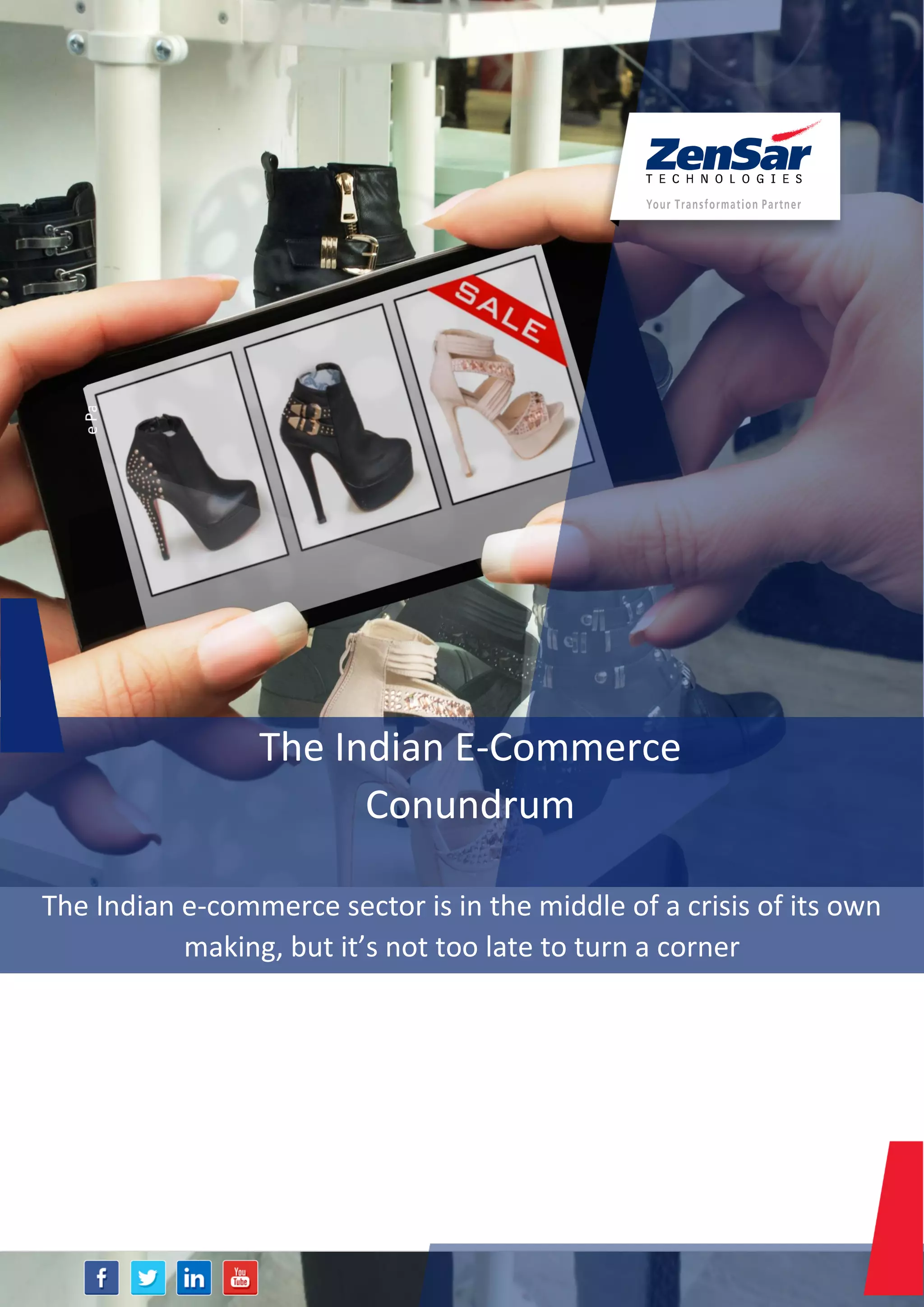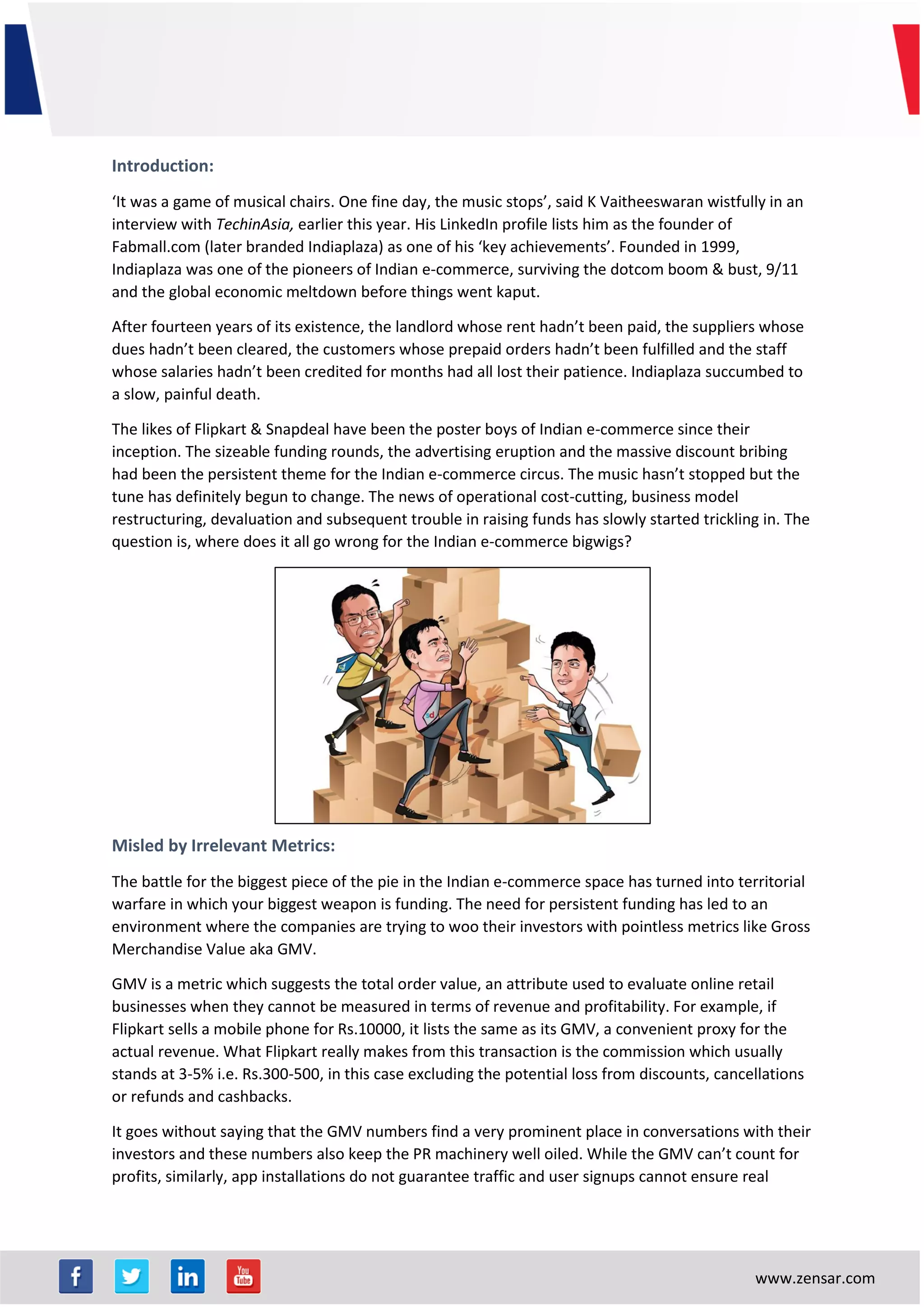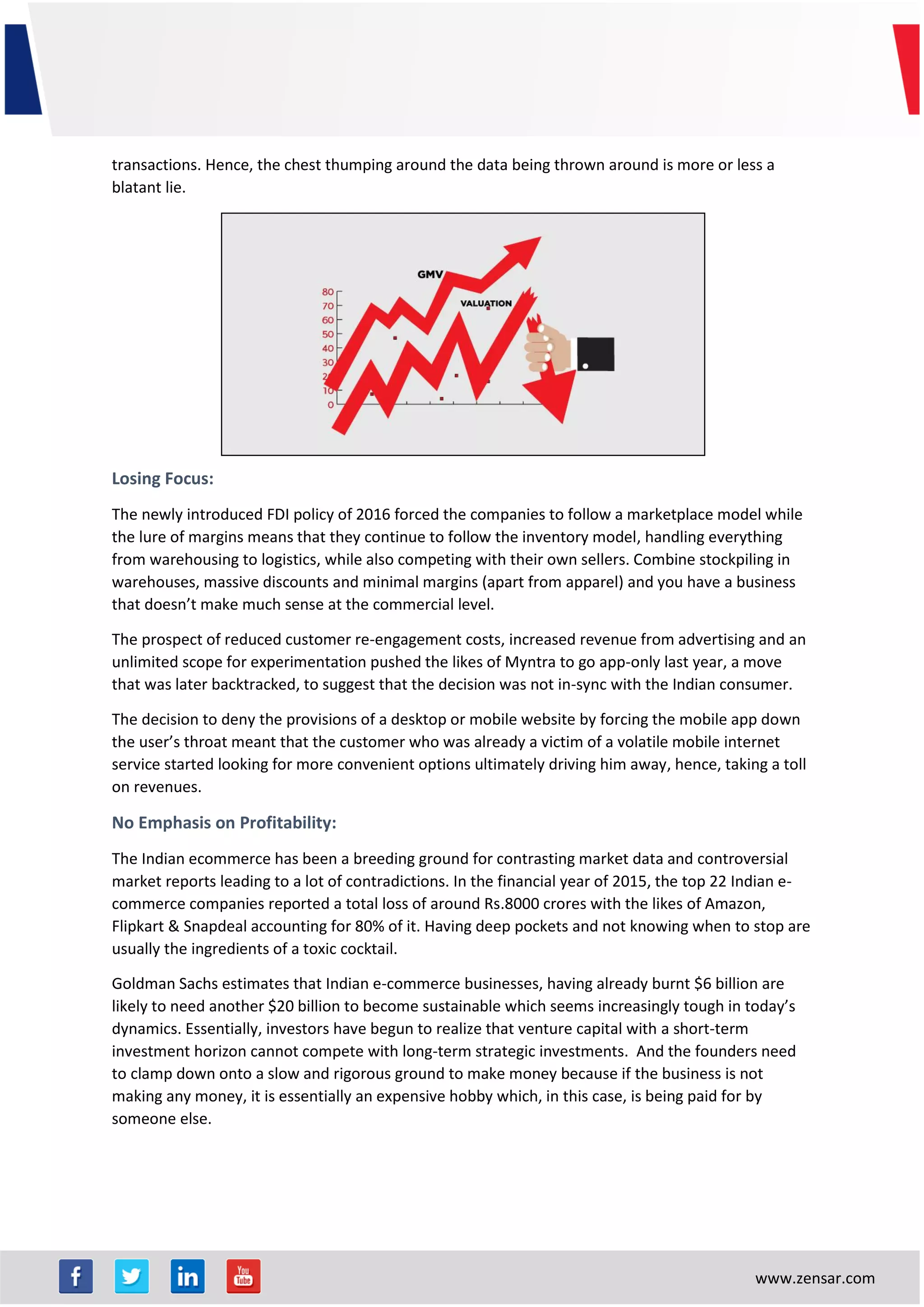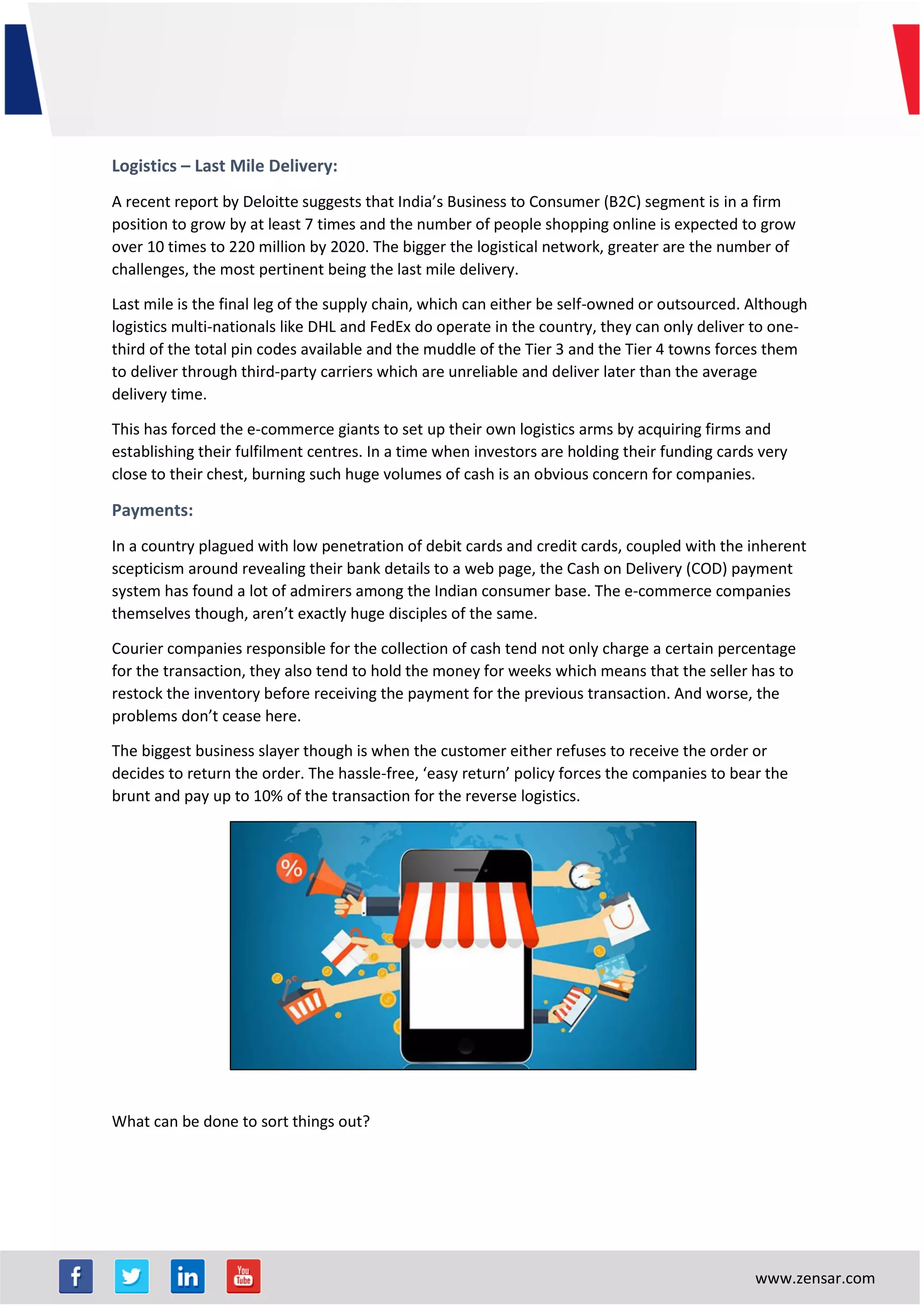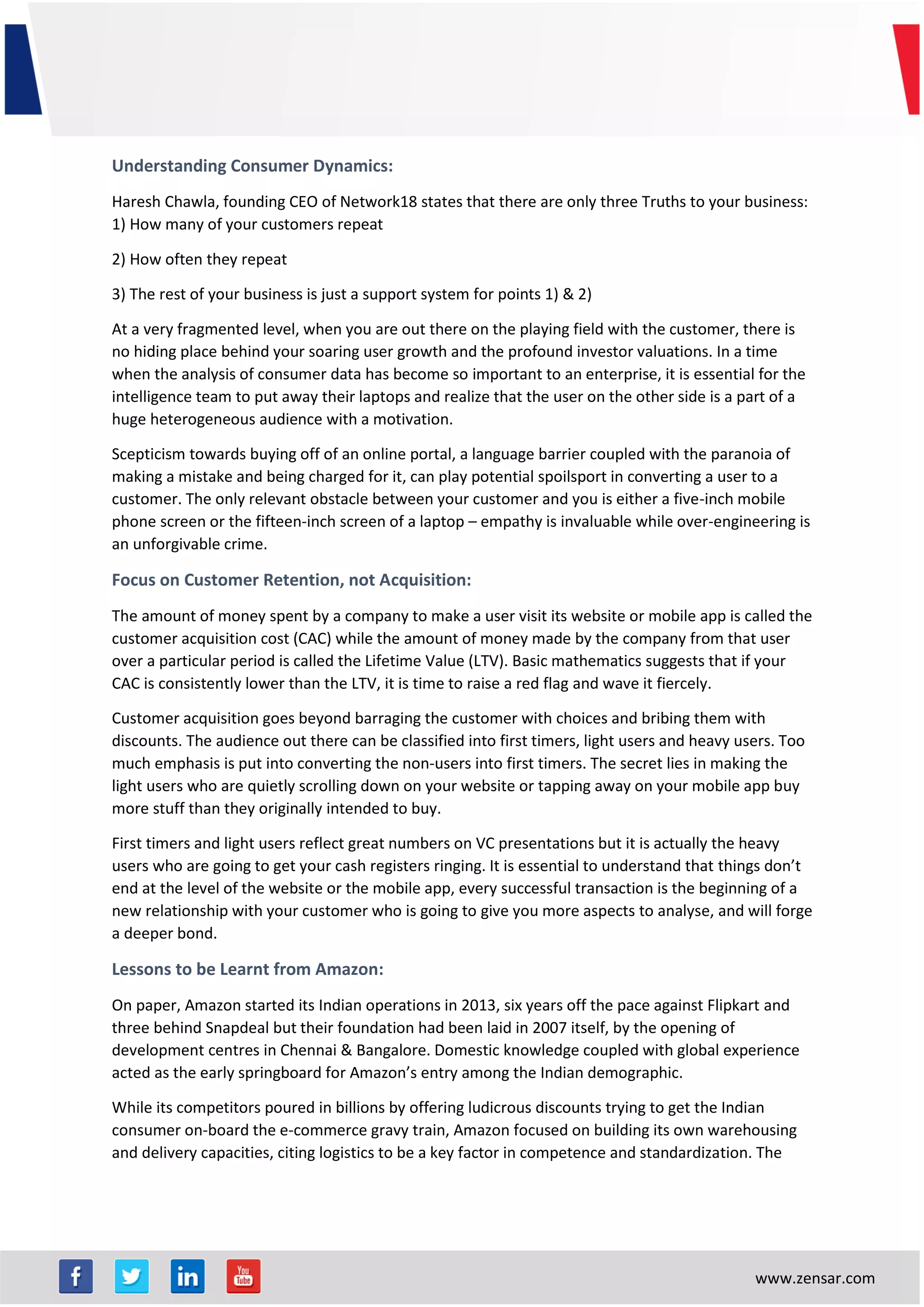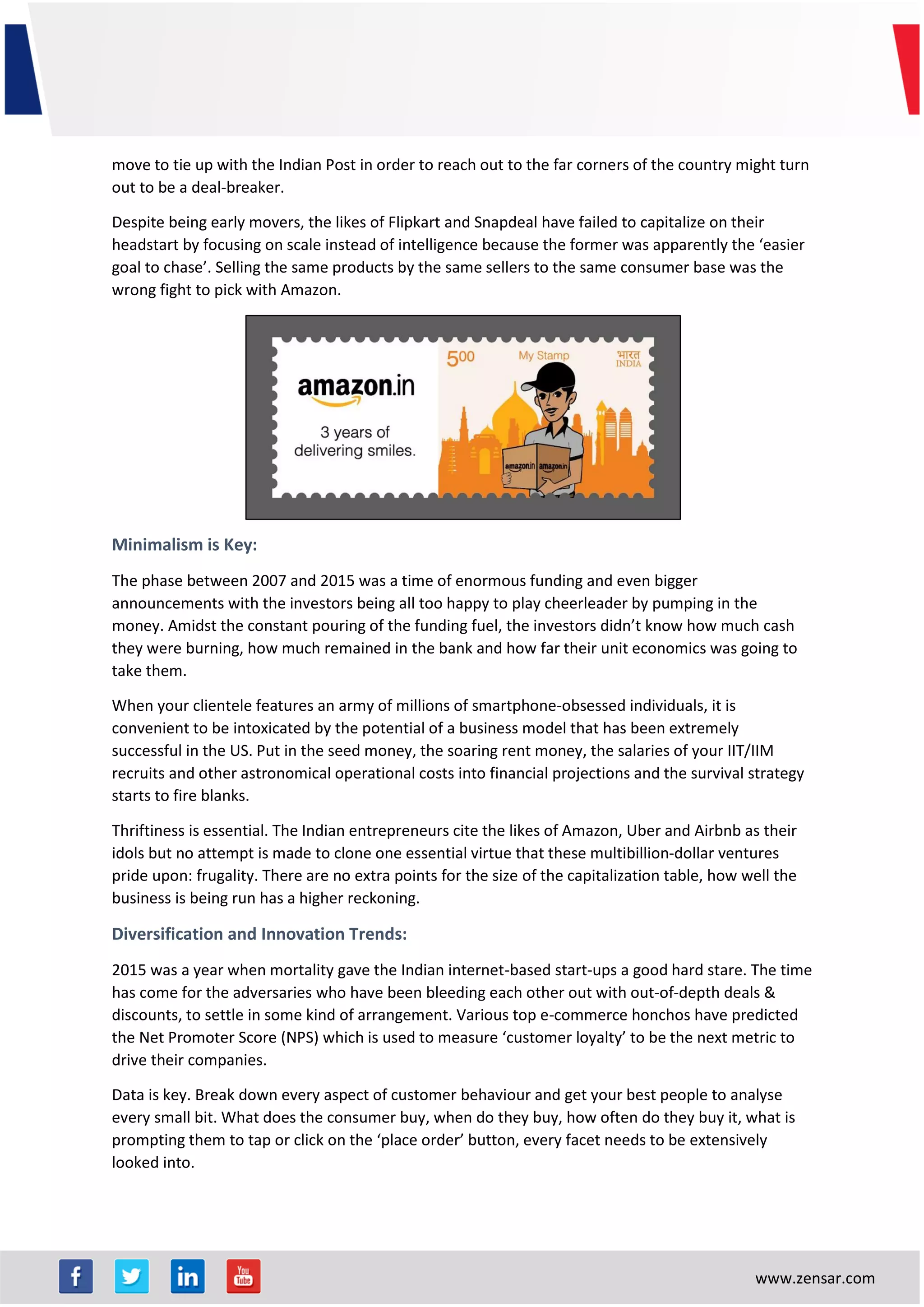The Indian e-commerce sector is facing challenges due to misplaced priorities of companies. Companies focused on increasing gross merchandise value and funding rounds rather than profitability. This led them to spend heavily on discounts, inventories, and warehouses while ignoring customer retention. While startups like Amazon focused on logistics and customer experience, others replicated the US model without understanding Indian customer preferences. For e-commerce to succeed in India, companies need to focus on minimizing costs, understanding local customer dynamics, and increasing customer loyalty through retention strategies rather than promotional discounts.
